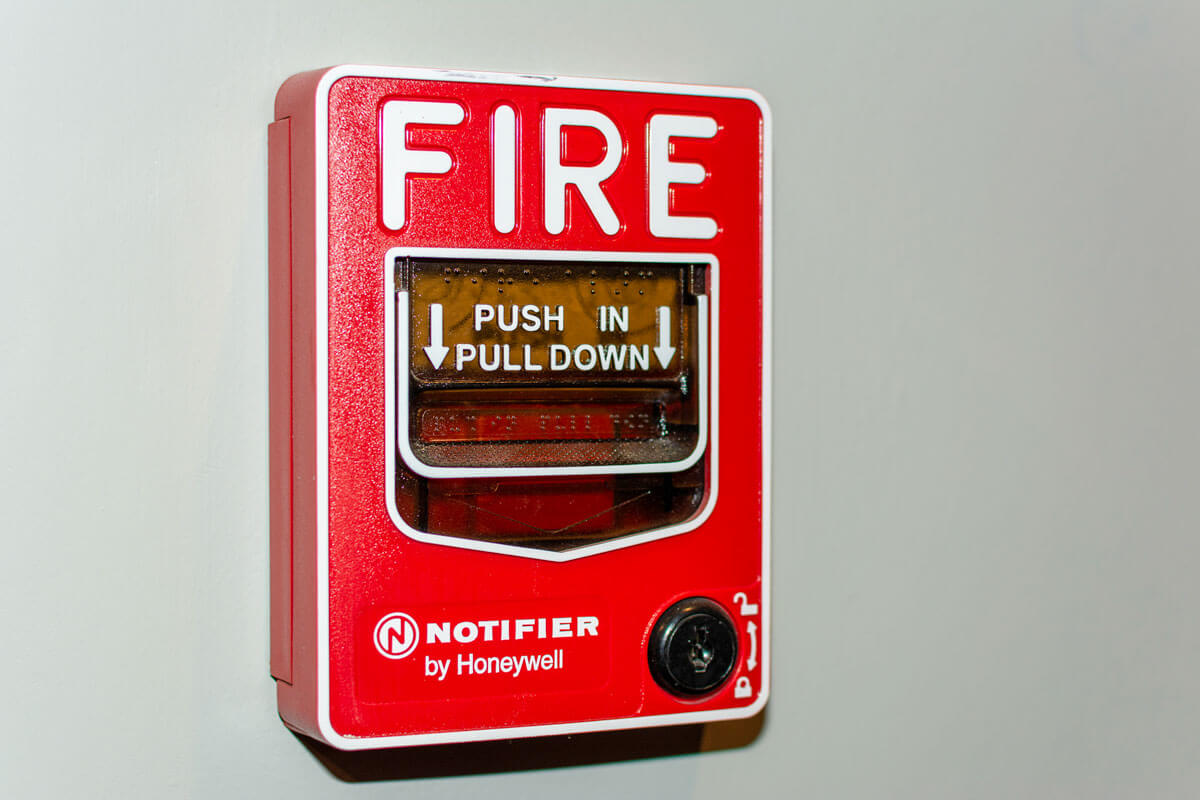Ensuring the protection of life and property is our mission
Every commercial building is required to have at least one commercial fire alarm.

You can count on Chief Facility Defense for your Fire Alarm installation, testing and maintenance.
In a range of different fire conditions, fire alarms offer early detection. These alarms contribute to a quick evacuation and a quicker emergency response time. Along with saving lives, this can greatly lower property loss and damage.
Your business’s demands can be met by Chief Facility Defense, a full-service fire alarm design, installation, inspection, maintenance, and monitoring firm. Whether you want to install new fire alarms or improve your current fire protection system, our certified trained personnel will make sure your fire alarm is properly maintained and always in compliance with the law.
There are two different and distinct categories of Commercial fire alarms.
An automatic fire alarm is the first. These alarms warn the occupants of danger by sending an audio-visual alert when they detect heat or smoke.
A manual alarm is the second category of fire alarm. There are pull stations placed all over your structure for these fire alarms.
One of your employees only needs to pull the leveler to inform the residents when they spot or smell a fire. Manual alarms are available in many different styles and hues.
There are also several types of Commercial fire alarms.
Several distinct “zones” that are linked to your central control panel are included in conventional fire alarms. These systems enable you to install distinct fire alarms in every area of your building and assist in keeping track of when an alert is tripped.
Since they keep an eye on the fire alarms in your building, these fire alarms are also known as “intelligent systems.” Large commercial buildings are best suited for an addressable fire alarm. You can choose between automated and manual alarms with addressable alarms. This system’s alarms are all individually identified by their own “address,” which lets you know which alarms are functioning and which aren’t. This enables first responders to find the fire quicker.
The system also allows for complex programming, which is a big advantage. With “cause and effect” programming, evacuations, for instance, can be carefully arranged to rely on whatever detector is activated. In order to enable safer and more effective evacuations, this can regulate the scheduling of additional alerts in various parts of the structure.
Due to the monitoring functions, addressable fire alarms are more expensive, yet they may end up being more cost-effective overall. The primary control panel of this kind of commercial fire alarm system is connected to all devices by a single wire in a loop, making it simple to add more devices later.
In a single panel, hybrid alarms combine the addressable loops and hardwired zone capabilities of conventional and addressable fire alarms. Compared to either the addressable or the conventional alarm, this combination technology fits some circumstances better.
Ionization smoke detection and photoelectric smoke detection are the two most well-known smoke detection methods.
Ionization smoke alarms are more responsive to flaming fires.
How they operate: Ionization-type smoke alarms ionize the air and induce current to flow between two electrically charged plates with the use of a small amount of radioactive material. Smoke disturbs ion flow when it enters the chamber, reducing current flow and setting off the alarm.
Photoelectric smoke alarms are more responsive to fires that begin with a prolonged period of smoldering (called “smoldering fires”).
How they work: A light source is directed into a detecting chamber by photoelectric alarms at an angle away from the sensor. The alarm is set off when smoke enters the chamber and reflects light onto the light sensor.
The benefit that each type of smoke alarm offers could be crucial to life protection in certain fire circumstances. Smoldering and blazing fires in buildings can both be fatal. You cannot forecast the kind of fire that might develop in your building or its timing. Any smoke alarm system must function for all sorts of fires in order to provide early fire detection at all hours of the day or night, whether you are awake or asleep.
Give us a call or contact us to find out more on how we can assist your company with all your facility maintenance services.

CHIEF FACILITY DEFENSE
Atlanta
Station 1
75 Mendel Dr. SW
Atlanta, GA 30336
(404) 523 – 5478

CHIEF FACILITY DEFENSE
Nashville
Station 3
474 Woodycrest Avenue
Nashville, Tn 37210
Phone: (615) 624 – 4500